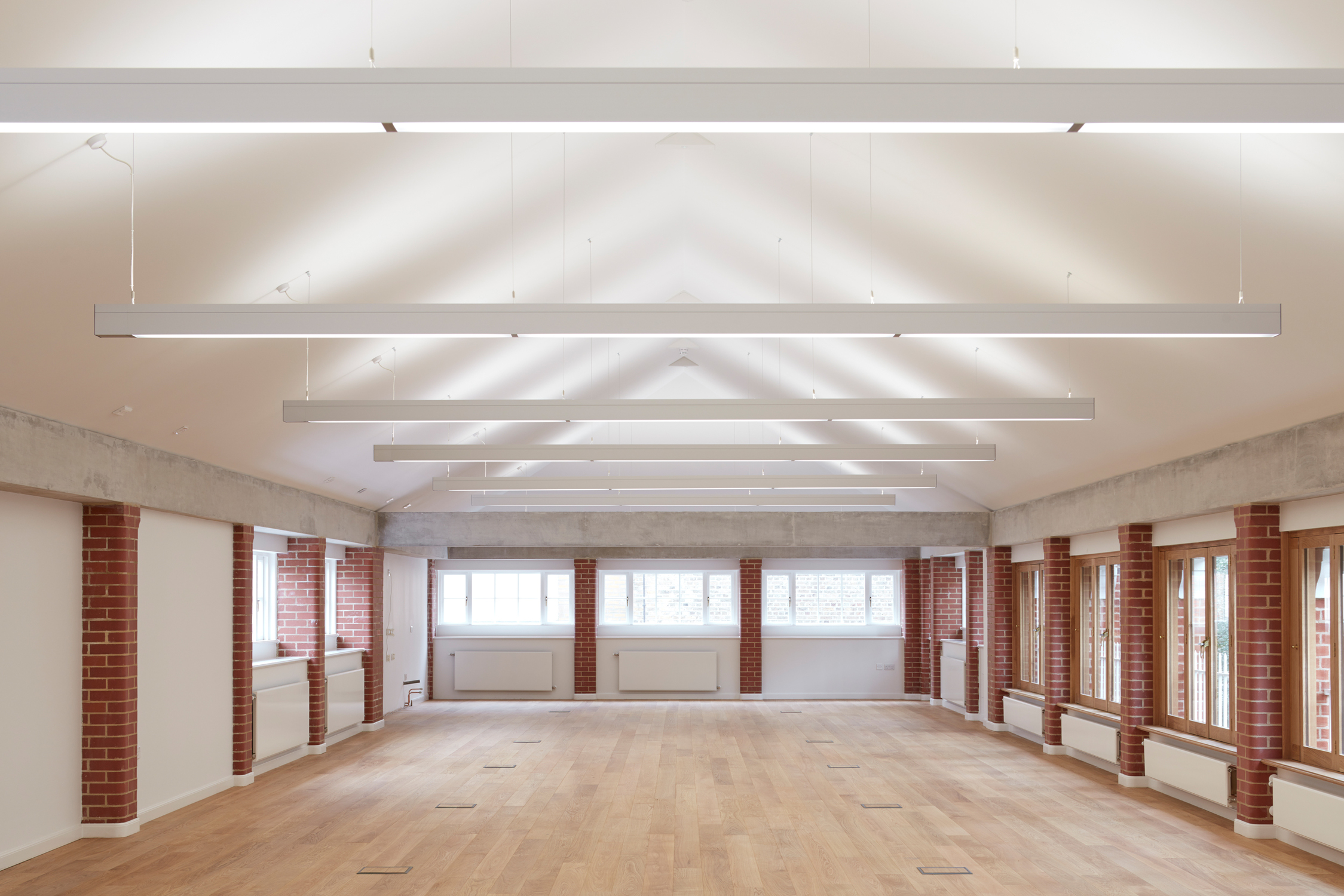
QA105
Club Row
Project
QA105
Location
Shoreditch London
Category
Mixed Usage
Status
Completed
Architects must be scrupulously careful about the colour and quality of the brickwork, the appearance of the joints, the proper method to be followed in carpenters’ and joiners’ work.
ER Robson, School Architecture (1874)



Quinn Architects have developed a radical project for the Grade II listed Club Row building based on the traditions of light and natural ventilation with well designed visible structure and building services. Granted consent on appeal by the Planning Inspectorate, the scheme was designed from within and ideas were developed from the original fabric using the same artisan crafts with which the building was originally constructed.
Materials such as zinc, terrazzo, brass, oak and fully handmade bricks balance new and old, and the new roof design, which was raised by 1.2 metres, announces the arrival of a new chapter in the building’s history in a modest yet contemporary manner.


The site of Club Row is the historic Nichol’s land which was developed by a variety of craftsmen and traders constructing individual houses. The Club Row building was constructed by the School Board for London in 1878-9 and designed by Edward Robson as an Infant School for approximately three hundred pupils. The school is an early example of Robson’s theory that buildings for the education of infants should be separate and distinct.
Woven into the worst slum in Europe the Nichol was condemned on health grounds in 1883 and the whole area was razed to the ground. The only two buildings to survive this ‘scorched earth’ policy, were The Rochelle and Club Row school buildings. The buildings were both orientated to the previous street layout which was erased and over-layed during the development of the seminal Boundary Estate in the 1890s. The boundary wall was built to veil the fact that the school building was not correctly aligned to the new street, thus restricting views of the previously street lining facade.


As tenants of Rochelle School, Quinn Architects have designed the new internal spaces specifically for fellow creatives, and the new scheme safeguards the future of the once derelict building by creating not just desirable workspaces, but also an extraordinary environment in which creative ecologies can thrive.



